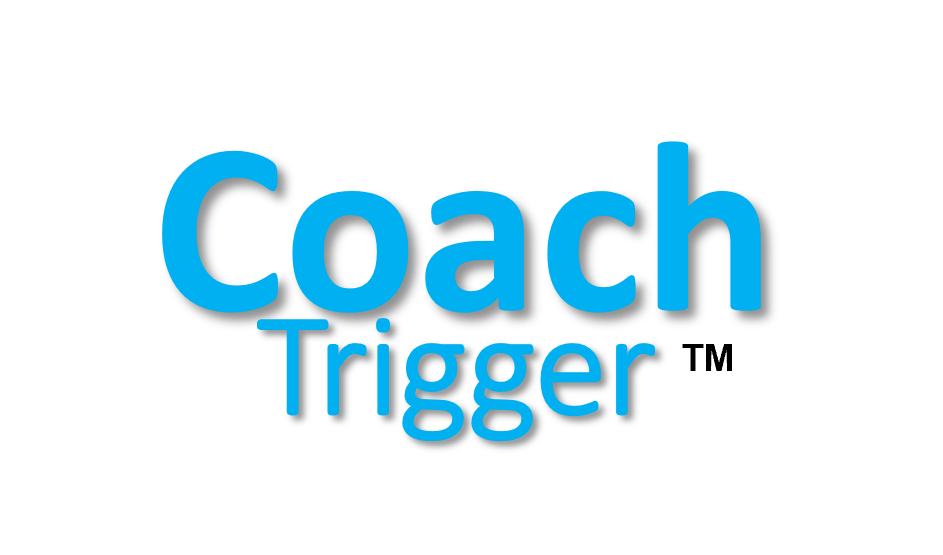4 Types of Leadership in a Work Environment

Leadership skills are essential for creating an effective work environment where teams thrive and succeed. But have you ever wondered what types of leadership styles exist and how they impact team dynamics? Whether you’re a leader looking to enhance your skills or a team member curious about the different approaches, this article will explore the four main types of leadership in a work environment and their unique characteristics.
Key Takeaways:
- There are four main types of leadership styles in a work environment: autocratic, democratic, laissez-faire, and coaching.
- Leadership style shapes team dynamics and impacts productivity, morale, and overall success.
- Understanding the characteristics and effects of each leadership style can help leaders enhance their skills and create a positive work environment.
- No one leadership style is universally effective; the best approach depends on the situation and the team’s needs.
- Effective leaders adapt their leadership style to the situation, incorporating elements from different styles to meet their team’s unique requirements.
The Pivotal Role of Leadership in Business Success
Leadership plays a pivotal role in the success of a business. Effective leadership shapes the culture, motivates employees, and drives the achievement of organizational goals. A strong leader can inspire and guide the team towards success, while a weak leader can hinder progress and create a negative work environment.
Autocratic Leadership: Command and Control
Autocratic leadership is a leadership style characterized by a leader who possesses complete control and authority over decision-making. In this leadership approach, the leader makes decisions without seeking input from the team, resulting in a top-down management approach. While autocratic leadership is often associated with an authoritarian style, it can be effective in certain scenarios where quick and decisive decisions are required.
The Nature of Autocratic Decision-Making
Autocratic decision-making involves the leader making decisions on behalf of the team without considering their input. This style is based on the belief that the leader possesses the knowledge and expertise to make the best decisions for the organization. Autocratic leaders tend to have a clear vision and strong direction, allowing them to make swift decisions and take immediate action.
Assessing the Impact of Autocracy on Team Morale
While autocratic leadership can lead to high productivity and efficiency, it often has a negative impact on team morale. The lack of involvement in decision-making and the top-down approach can result in team members feeling disengaged, undervalued, and demotivated. Autocratic leadership can create a hierarchical and restrictive work environment where creativity, collaboration, and open communication may be stifled.
Identifying Scenarios Where Autocratic Leadership Thrives
Although autocratic leadership is generally associated with negative effects on team morale, there are scenarios where it can thrive. Autocratic leadership can be effective in crisis situations where immediate action and firm decision-making are necessary. The autocratic style is also suitable in environments that require strict compliance with rules and procedures, such as certain military or safety-related contexts. In these scenarios, the hierarchical structure and clear chain of command provided by autocratic leadership can enhance efficiency and ensure the rapid execution of tasks.
| Advantages of Autocratic Leadership | Disadvantages of Autocratic Leadership |
|---|---|
| 1. Quick decision-making | 1. Low team morale |
| 2. Clear direction and vision | 2. Limited creativity and innovation |
| 3. Efficient task execution | 3. Lack of employee empowerment |
Democratic Leadership: Collective Wisdom at Work
Democratic leadership is a style that emphasizes team participation in decision-making, harnessing the collective wisdom of the group. This approach encourages collaboration, creativity, and empowers team members to take ownership of their work. By involving employees in the decision-making process, leaders can tap into the diverse perspectives and ideas that each team member brings to the table. This not only fosters a sense of inclusivity and engagement but also allows for more well-rounded and informed decisions.
Encouraging Team Participation in Decision-Making
One of the key aspects of democratic leadership is encouraging team participation in decision-making. Instead of a top-down approach where decisions are handed down from the leader, democratic leaders value and seek input from their team members. This can be done through open discussions, brainstorming sessions, or even voting on certain decisions. By involving the team, leaders can benefit from the collective wisdom and diverse perspectives, ultimately leading to better outcomes and increased buy-in from team members.
Balancing Creativity with Organization Goals
A challenge that democratic leadership faces is balancing creativity with organizational goals. While involving the team in decision-making can lead to innovative and creative ideas, it is essential to ensure that these ideas align with the overall objectives and goals of the organization. Leaders must strike a balance between encouraging creativity and ensuring that the team’s efforts are aligned with the organization’s strategic direction. This requires clear communication, effective goal-setting, and the ability to guide the team towards achieving a balance between individual creativity and organizational objectives.
Understanding the Challenges of Democratic Leadership Dynamics
Democratic leadership dynamics can present their own set of challenges. As decisions are made collectively, leaders may need to manage conflicting opinions and navigate the potential for disagreements within the team. It is important for leaders to create a supportive and inclusive environment where all team members feel comfortable expressing their ideas and opinions. Additionally, democratic leaders must be skilled in facilitating discussions and managing the decision-making process to ensure it remains efficient and productive.
| Challenges of Democratic Leadership Dynamics | Strategies to Address Challenges |
|---|---|
| Managing conflicting opinions | Encourage open communication, active listening, and the exploration of different viewpoints. Facilitate constructive discussions to find common ground. |
| Dealing with potential disagreements | Create a safe and respectful environment where conflicts can be addressed and resolved professionally. Mediate conflicts and encourage compromise when necessary. |
| Maintaining decision-making efficiency | Set clear timelines and deadlines for decisions. Establish guidelines and processes to streamline the decision-making process while still valuing team input. |
Overcoming these challenges is crucial for the success of democratic leadership. By understanding and addressing these dynamics, leaders can leverage the collective wisdom and strengths of the team to drive innovation, collaboration, and ultimately achieve organizational goals.
Laissez-faire Leadership: The Hands-Off Approach
Laissez-faire leadership is a leadership style characterized by a hands-off approach, where leaders provide minimal guidance and allow employees to work autonomously. This style promotes employee empowerment and can be effective in certain situations where employees are self-motivated and skilled.
Under laissez-faire leadership, employees have the freedom to make their own decisions and take ownership of their work. This autonomy can cultivate a sense of responsibility and motivation, leading to increased productivity and creativity. When employees feel trusted and empowered, they are more likely to contribute innovative ideas and solutions to meet organizational goals.
However, it is important to note that laissez-faire leadership can also have its challenges. Without proper management and support, this hands-off approach can result in a lack of direction and accountability. Some employees may require more guidance and structure to thrive, and without it, their performance may suffer.
To effectively implement laissez-faire leadership, leaders need to establish clear expectations and provide the necessary resources and support for employees to succeed. Regular check-ins and communication can ensure that employees feel supported and understand their role within the organization.
In summary, laissez-faire leadership can be a powerful style that promotes employee empowerment and autonomy. By harnessing the potential of each team member and providing the necessary guidance, leaders can create an environment that fosters innovation, creativity, and growth.
| Leadership Style | Guidance Level | Employee Empowerment |
|---|---|---|
| Laissez-faire Leadership | Hands-off | High |
| Autocratic Leadership | Command and control | Low |
| Democratic Leadership | Collaborative | Moderate |
| Coaching Leadership | Guidance and support | High |
The Coaching Model: Developing Future Leaders
The coaching model of leadership is a powerful approach to developing future leaders within organizations. By providing guidance, support, and opportunities for personal growth within teams, coaching leadership fosters personal growth and helps individuals reach their full potential.
Fostering Personal Growth within Teams
One of the key aspects of coaching leadership is fostering personal growth within teams. Leaders who utilize a coaching approach actively support their team members in developing their skills, expanding their knowledge, and enhancing their capabilities. They encourage continuous learning and provide resources and opportunities for personal and professional development.
Aligning Employee Aspirations with Company Vision
An important aspect of coaching leadership is aligning employee aspirations with the company’s vision. Leaders who adopt a coaching approach take the time to understand their team members’ goals, ambitions, and aspirations. They work collaboratively with individuals to help them align their aspirations with the organization’s objectives.
Through open and honest conversations, coaching leaders create a space where employees feel heard, valued, and supported. They help individuals identify ways to contribute to the company’s vision while also ensuring that their aspirations are fulfilled. This alignment between employee aspirations and company vision creates a sense of purpose and engagement, fostering a strong connection between individuals and the organization.
Recognizing the Potential Risks of Intense Leadership Drive
While coaching leadership can be highly beneficial, it is important to recognize the potential risks associated with an intense leadership drive. Leaders who are overly focused on achieving results and driving performance may inadvertently create an environment that lacks work-life balance or promotes burnout.
Coaching leaders must find a balance between pushing individuals to reach their potential and ensuring their well-being. By recognizing the risks of intense leadership drive, leaders can implement strategies to promote work-life balance, encourage self-care, and foster a supportive and healthy work environment.
Leadership and Its Influence on Organizational Culture
Leadership plays a significant role in shaping the culture of an organization. The behavior, values, and decisions of leaders influence the values and norms within the company, impacting employee attitudes, morale, and overall organizational culture. When leaders demonstrate effective leadership skills and embody the desired core values, they set the tone for the entire workforce.
Leadership has a direct impact on company culture by defining the expectations for employee behavior, communication, and work ethics. Leaders who prioritize collaboration, inclusivity, and transparency create a positive and inclusive culture that fosters creativity, innovation, and personal growth.
On the other hand, leaders who exhibit autocratic or micromanaging behaviors can create a culture of fear, mistrust, and limited autonomy. Such a culture can hinder employee morale and lead to a lack of engagement and productivity.
Organizational culture is influenced not only by explicit leadership actions but also by the implicit behaviors that leaders demonstrate. For example, if a leader consistently prioritizes short-term results over long-term value creation, it can create a culture of short-sightedness and unsustainable practices. Conversely, leaders who prioritize ethical decision-making and sustainable practices can shape a culture of integrity and long-term success.
To shape a positive organizational culture, leaders need to actively communicate and model the desired values and behaviors in their daily interactions with employees. By consistently demonstrating these values, leaders create a sense of purpose and belonging, fostering a culture of engagement and commitment.
| Key Assumptions | Leadership Impact |
|---|---|
| Collaborative and inclusive leadership | Positive and inclusive organizational culture |
| Transparent and open communication | Culture of trust, transparency, and effective collaboration |
| Autocratic and micromanaging leadership | Culture of fear, mistrust, and limited autonomy |
| Ethical and sustainable leadership | Culture of integrity and long-term success |
Overall, leadership plays a crucial role in shaping the organizational culture. Through their behavior, values, and decisions, leaders have the power to create a culture that drives employee engagement, satisfaction, and ultimately, organizational success.
Improve Team’s Performance with CoachTrigger
Are you looking to improve your team’s performance and unlock their full potential? Look no further than CoachTrigger, an innovative platform for coaching & training designed to enhance team dynamics and drive success. With a variety of effective coaching tools, CoachTrigger empowers leaders like you to develop the skills needed to take your team to new heights.
Through CoachTrigger’s unique features and benefits, you can cultivate a positive and productive work environment. This equips you with the tools and strategies to optimize team performance, align individual goals with company objectives, and foster a culture of growth and collaboration. Try your 14-day trial today.






